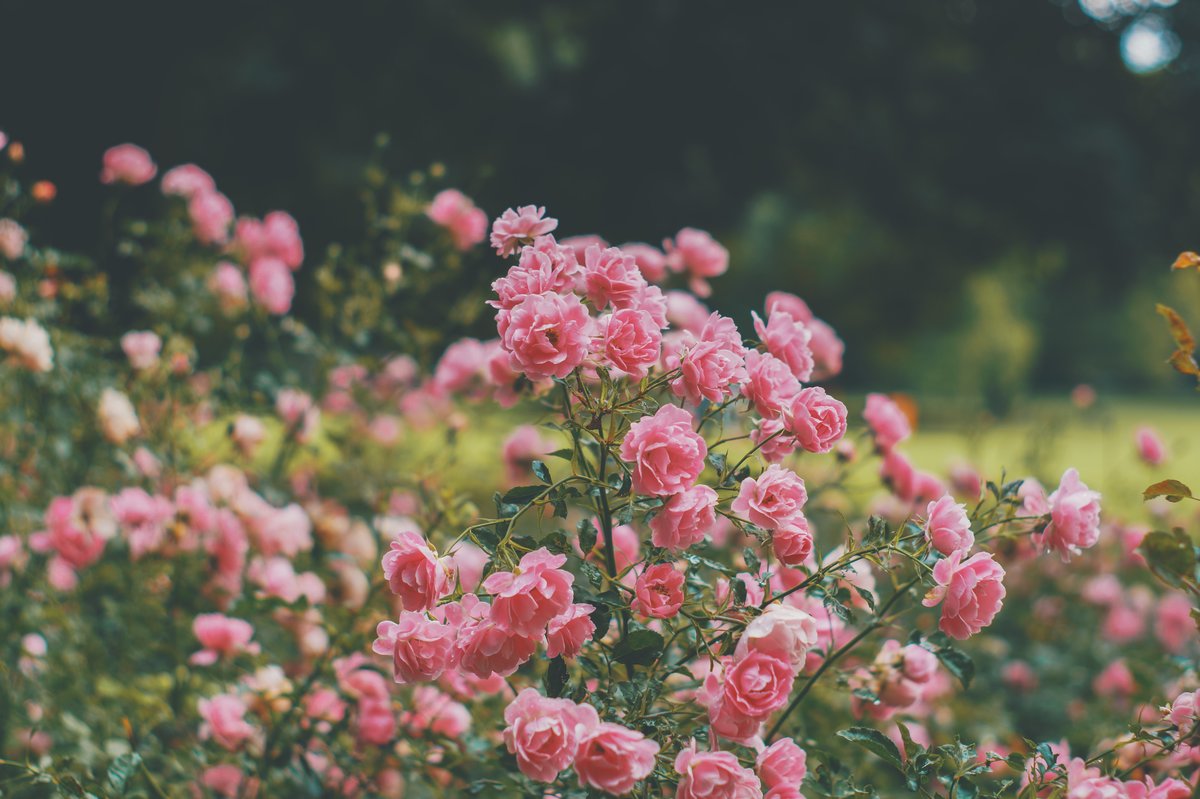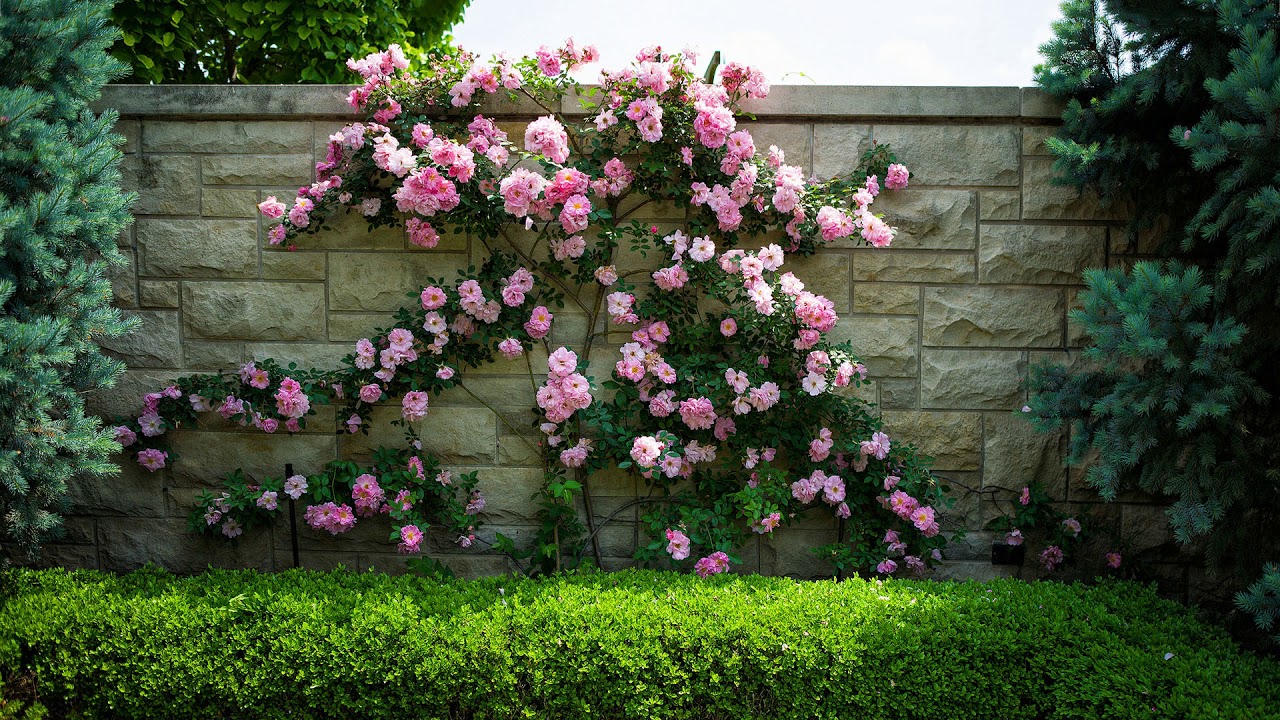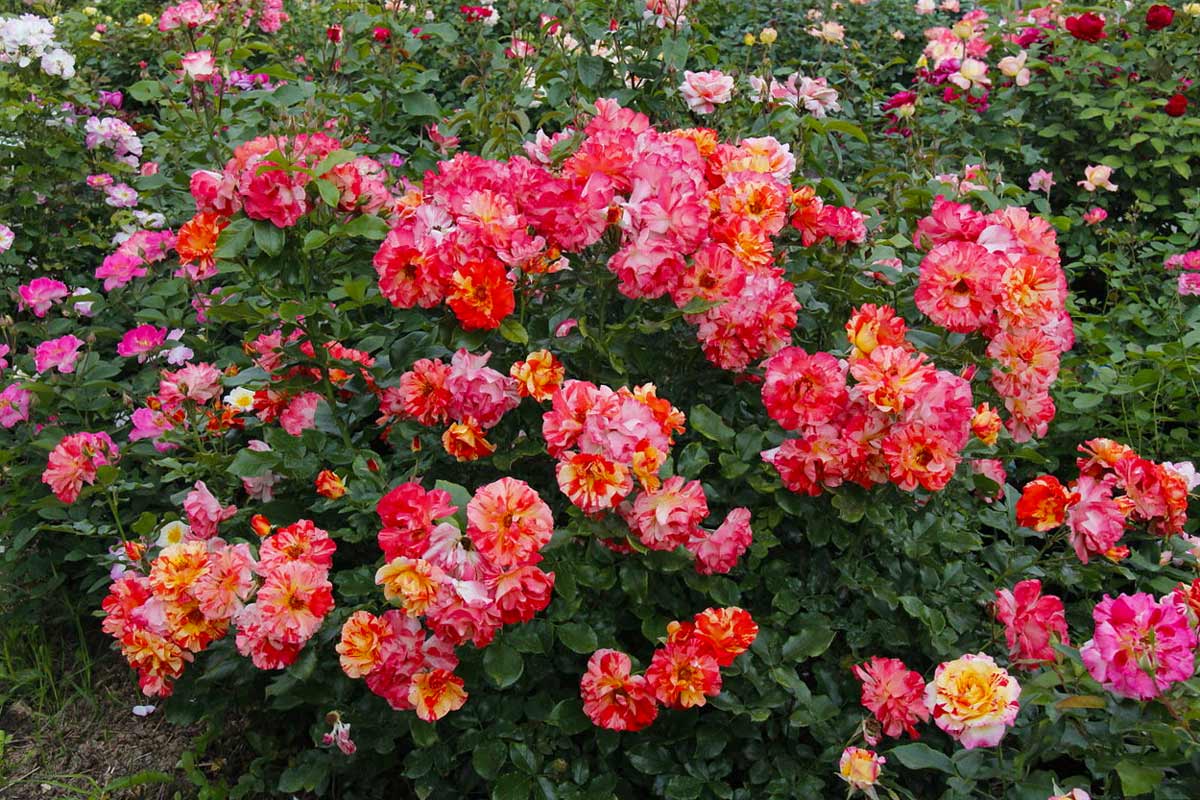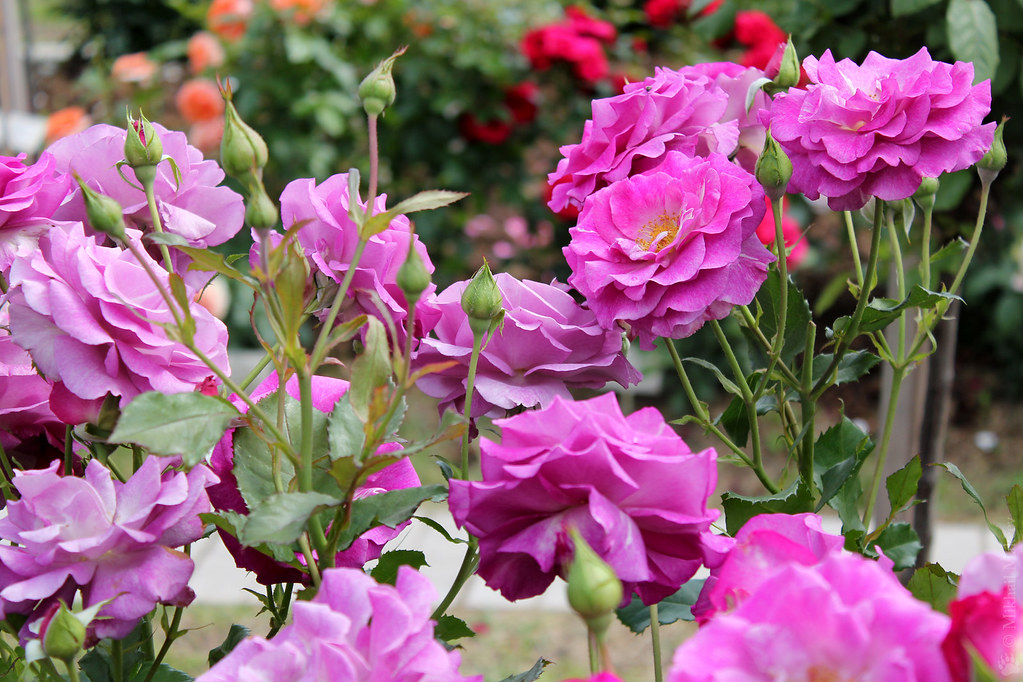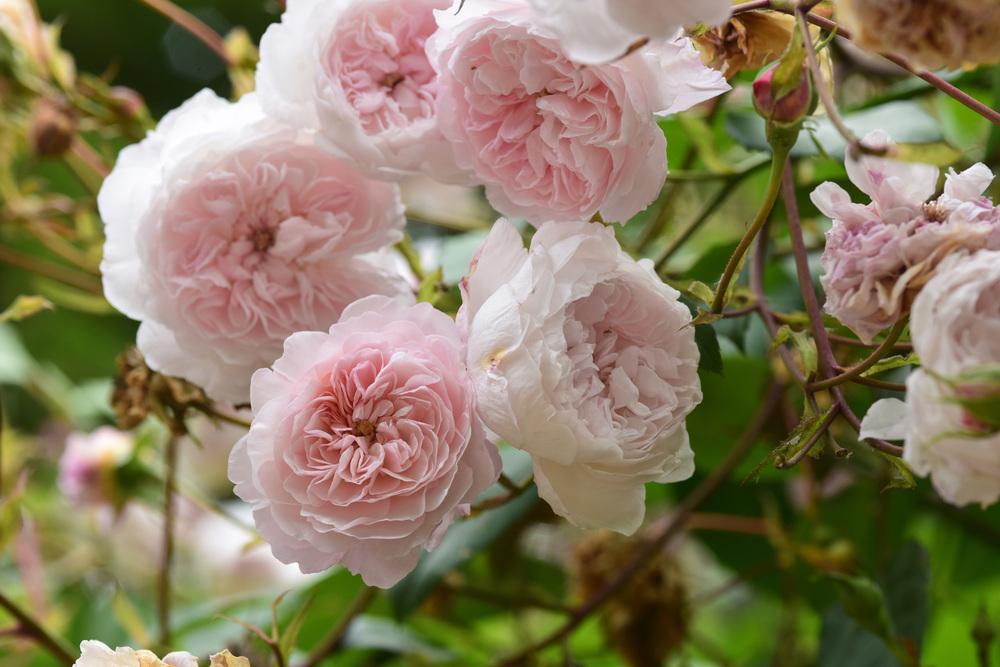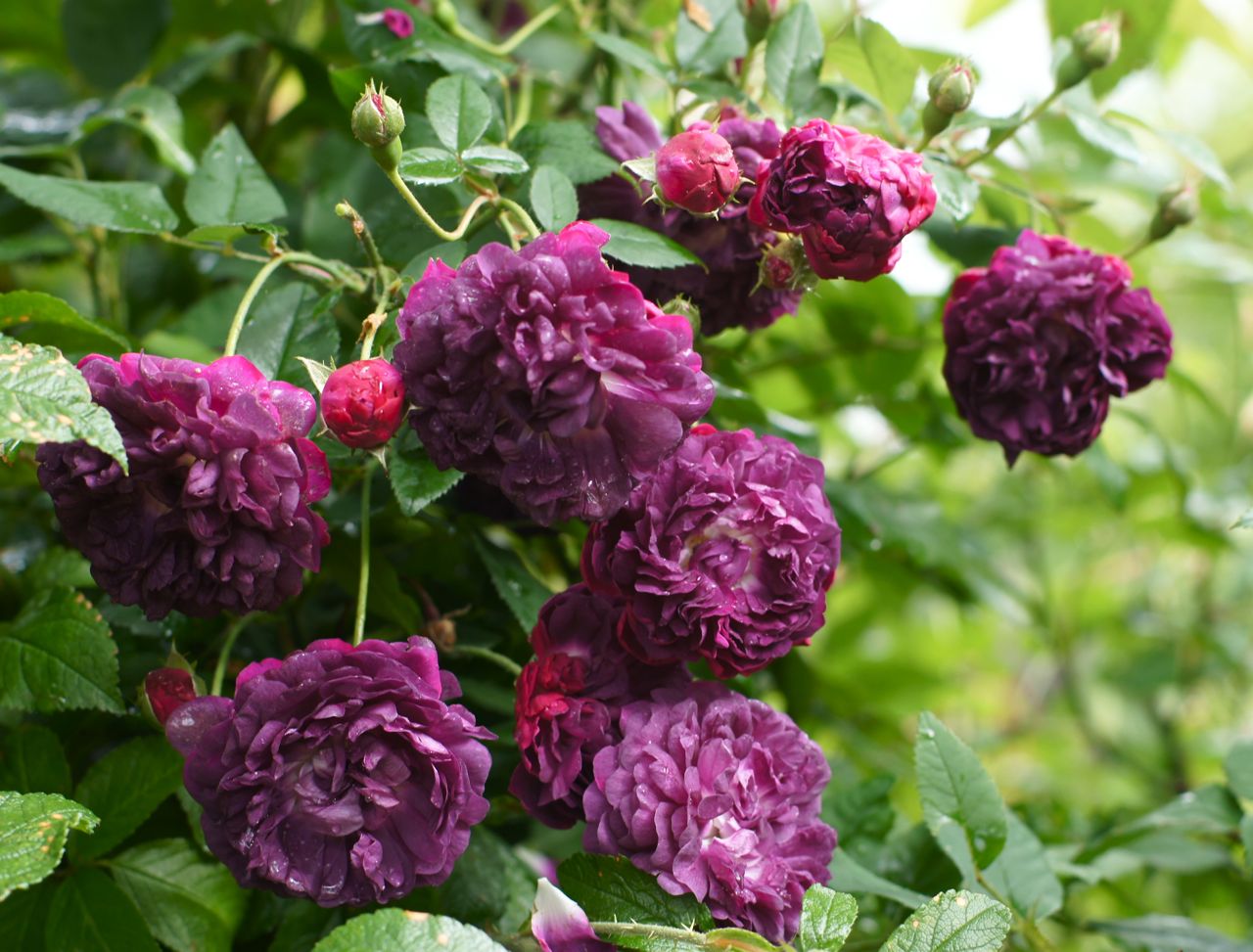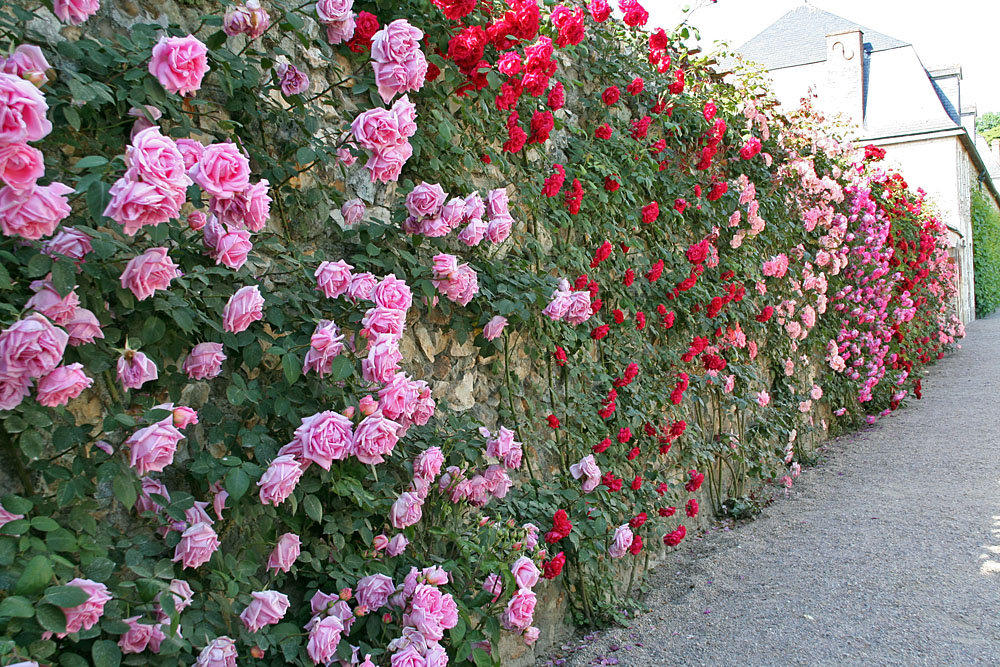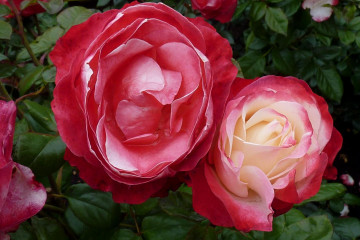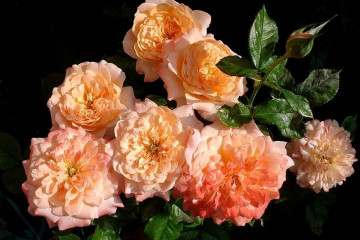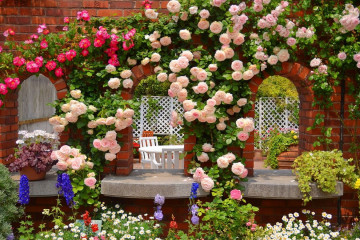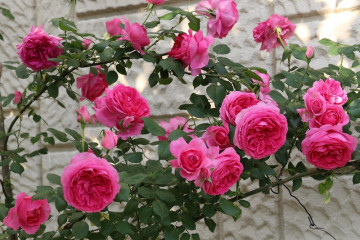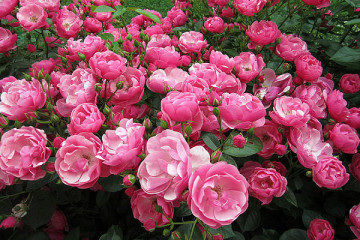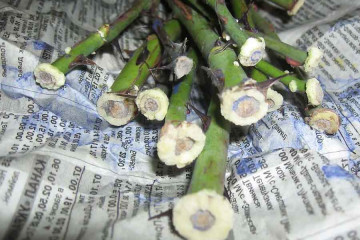Shrub roses - what is it, types with a description
Content:
Curly trees, flowers fragrant with heady aromas and spreading shrubs are the dream of any gardener. One of the brightest representatives of garden plants are bush roses. No other flower will give such a long and abundant flowering. They can be of any shape and color. They fit well into any garden composition, serve as a decoration for the landscape and the pride of flower growers.
Shrub roses: description and characteristics of the variety
The culture belongs to the Shipovnikov family. The name of these flowers speaks for itself, they grow in the form of a shrub. The original structure of the stem, shoots and flowers of spray roses was obtained thanks to many years of work by breeders on crossing the plant with other representatives of the pink world. The result was a huge assortment of shrub colors and shapes. Each species differs in the structure of the petals, the structure of the bud, and the height of the stems.
Main general characteristics:
- the height of the bush varies from 25 cm to 3 m;
- sprawling plant shape;
- shoots are smooth, flexible, stiff;
- a large number of sharp thorns;
- matte ellipsoidal leaves of various shades of green;
- large flowers in inflorescences or growing singly in diameter up to 22 cm;
- the aroma of buds is not pronounced or completely absent;
In addition, there are a number of features due to which these shrubs are widely popular in floriculture circles:
- an abundance of colors and forms of the structure of the bud;
- long flowering;
- not demanding on weather conditions;
- variety of options for use in landscape design;
Garden rose bush is grown in several ways: cuttings, layering and seed method.
Main varieties
There are dozens of main varieties and several varieties of spray roses.
Park
The most common bushy roses of the genus of domesticated rose hips. The main advantage of these representatives is the good tolerance of frosty winters. They do not require any special care measures in the cold season.
In addition, with the tandem of favorable weather conditions and competent care of the gardener, park roses, already with the onset of summer, can please with abundant flowering, which will last more than a month.
Park roses have hundreds of varieties in their arsenal, which are part of the English and Canadian group of varieties.
Polyanthus
Classification of multi-flowered bush roses. The culture is not high, a little more than half a meter. Its difference is in dense foliage and small buds, which, during the flowering period, densely cover the entire crown of the plant.
Each inflorescence can form 40-50 flowers. The index of frost resistance is high, as is the resistance to diseases and fungal infections.
Small-flowered bush rose gives good shoots when propagated by seed. They are resistant to droughts and sudden changes in temperature.
Floribunda
The group of these spray roses has been officially classified relatively recently, since 1976. Their niche is between polyanthus and hybrid tea species. This is because floribunda roses have the distinctive features of both representatives.
Shrubs of this group can be of different heights, from dwarf to tall varieties. In contrast to hybrid tea roses, floribunda has a rich saturated color of petals. The vitality and frost resistance of this variety is above average. They are mainly used in bouquet arrangements.
They land singly and in groups. In bloom, they fully justify their name, which means blooming profusely.
Grandiflora
A young group of bushy roses, obtained by crossing floribunda and hybrid tea varieties. The culture has a strong structure, shoots up to 2 m high. The structure of the buds is similar to hybrid tea, but surpasses them in splendor. In landscaping squares, gardens and park areas, they are good both in group compositions and in single planting.
Climbing
Rose bushes that form long shoots need support. Capable of abundant avalanche flowering for more than 3 months in a row. They are used in the formation of arches, hedges, decoration of fences and facades of buildings. Color palette from red to purple.
Popular decorative varieties
Street bush roses are divided into many varieties, varieties and subspecies, each of which has its own name. Modern breeding works wonders, thanks to which new artisanal roses are distinguished by good transportability and unpretentious care. This makes them in demand both in Russia and around the world.
In the Russian Federation, the following varieties are most popular:
- Spirit of Freedom
This is an English rose breeder David Austin. The variety is young, obtained in 2002. Its business card is a huge goblet-shaped bud.
It blooms for a long time, repeatedly, with double flowers, which are collected in inflorescences up to 15 pieces each. The color of the buds varies from pale pink to lilac, depending on maturity. Branched bush up to 3 meters in height, needs a garter. Leaves are light green. The aroma of flowers is bright, heady. Frost-resistant and not capricious variety.
- The Albrighton Rambler
The repeated blooming climbing rose of Albrighton Rambler has cupped flowers of a pale pink shade that smoothly turns into white. Blooms in inflorescences hanging from shoots that grow more than 3 meters.
The aroma is light, musky. For planting in the ground, it is preferable to choose a sunny place. Used in hedges, arched structures. Not demanding in leaving.
- Excelsa (variety Michael Ocean)
Its advantage is long flowering, rich in buds. Each branch blooms about 10 flowers up to 6 cm in diameter. It grows rapidly, releasing flexible vines up to 4 meters long.
Leaves are oval, elongated, glossy, dark green. The buds appear in pink racemose inflorescences. The standard bush is not picky about soil indications. It is used in vertical gardening.
- Abrahamdarby
A unique variety of English yellow bush rose. Cup-shaped flowers can change color from honey to pink. They have a pronounced aroma and large double buds. The bush is strong, fast-growing, disease-resistant. Looks good in the background of mixborders.
- Cardinal Richelieu
A bush with purple, bowl-shaped flowers up to 10 cm in diameter. Self-cleaning plant with strong immunity. It grows up to one and a half meters.It can become the center of a rose garden, thereby creating shade for other horticultural crops.
- Flamingo
Winter-hardy variety that prefers sunny places. Lush shrub, constantly growing, with light pink flowers. Over time, the edges of the petals become transparent. Goblet buds up to 10 cm long. Flowering is long, until frost. Medium resistant to diseases and fungal infections.
Features of growing spray roses in the garden
Experienced gardeners recommend planting bush roses in open ground in the fall, before the onset of cold weather. It is not advisable to purchase seedlings in advance. It is better to choose a landing site that is well lit, but without the scorching midday sunlight. The presence of groundwater on the site can adversely affect the development of the plant. Caring for bush roses is not difficult, but it requires compliance with some features of agricultural technology.
Watering
The flower does not need frequent watering. It is enough that the procedure is regular and plentiful. Especially during periods of intensive growth and dry weather. Usually watering is carried out in the morning or evening with water at room temperature.
Fertilizer
Plants of the first year of life do not fertilize. Further, the flowers are fed with organic matter and complex fertilizers after wintering and before it. Another application of fertilizers is carried out during the ovary of the buds.
Shelter for the winter
Despite the frost resistance, do not forget about the correct shelter of the bushes before the onset of frost. But do not wrap tall roses too much, the greenhouse effect may occur and the culture will get sick.
Pruning
The first pruning of the shrub occurs in roses of the first year of planting during budding. This will help the plant develop a strong root system.
Fast-growing, damaged or weak branches, for the purpose of prevention and for shaping the bush, are pruned as necessary or to provide a decorative appearance.
A faded bud with a peduncle must also be removed.
To regulate flowering, large branches are cut. In their place, young shoots are formed, which will grow new buds.
Disease and pest control
For the prevention of diseases and pest control, you need to regularly inspect the plants and follow the rules of agricultural technology. If you suspect an ailment, modern drugs from gardening stores are used.
Rose is a universal flower. Whether small or large, it looks equally good in a pot on a windowsill or in a garden. Taking care of a plant is not difficult. And what it will be called and look like is a matter of personal preference.
